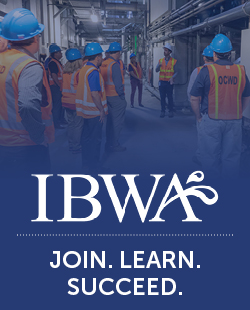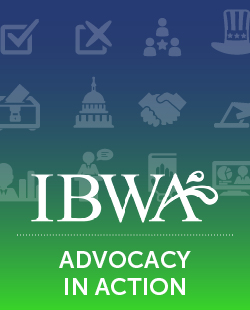March 7, 2003
Background
On March 7, 2003, entertainers Penn & Teller will examine bottled water on their program “Bullsh*t!” on the ShowTime cable network. Along with topics such as feng shui, pet psychics, alien abductions and other bizarre and unrelated topics, the 13-month series claims to examine and “debunk” social trends and “strange beliefs.” Despite clever editing, sensationalized reporting, and over-the-top skepticism — not to mention extremely coarse language — the program may impact viewer/consumer perceptions about bottled water, regardless of the program’s obvious satirical approach. The program may rely heavily on the 1999 report by the Natural Resources Defense Council (NRDC) and includes interview segments with NRDC’s Eric Olsen.
To prepare members for possible inquiries, IBWA has developed a communications guidance document addressing this particular program. In that this document is being prepared in advance of the airing, it does not respond to specifics. However, IBWA will update the guidance document – if warranted – to respond to particular statements made on the program.
Please feel free to distribute these materials to personnel that communicate with media and consumers. You may also refer media to contact the IBWA communications department for a national, industry-wide perspective on the program. Media should ask for IBWA Communications Manager Gwen Haynes at 703-683-5213 x 107 or they may visit the IBWA web site at www.bottledwater.org for general industry or IBWA information.
Program Specific/NRDC Talking Points
-
- In February 1999, the Natural Resources Defense Council (NRDC) issued a report on bottled water that included laboratory tests of a random sample of bottled water. While the study found bottled water to be safe, it contained several flawed assumptions. Of 45,000 individual tests, only two exceeded federal standards.
-
- The NRDC report is not new and has since been subject to a scientific and technical analysis by the Drinking Water Research Foundation (DWRF) that clearly demonstrated flaws and misinformation in the NRDC Report. The DWRF document may be viewed and referenced at the IBWA web site at www.bottledwater.org.
-
- NRDC’s testing showed 1) that bottled water is of good quality with contaminant levels well below those found through similar tests of public water. 2) Bacteria found in some bottled waters were HPC microbes, which are harmless, naturally occurring flora.
-
- In April 2002, a World Health Organization (WHO) Expert Panel on HPC bacteria determined that the presence of HPC bacteria in water does not pose a health threat. FDA also shares this view.
-
- Only two NRDC tests may have exceeded federal standards, and those could not be verified during re-testing. This is an excellent safety record when compared to municipal water.
-
- According to the NRDC study, each day 10 percent of community tap water systems serving 1 out of 7 Americans violate federal safety standards for contaminants.
-
- The NRDC spokesperson alleges that all brands tested contained arsenic. However, all brands tested by NRDC were fully compliant with all current FDA standards and some may not have actually contained anything other than trace elements, if any at all.
-
- Claims are made as to the lack of FDA staff dedicated to bottled water in comparison to the “hundreds” of EPA inspectors tied to public water. While there are not specific bottled water-only responsibilities at FDA, the team at FDA’s Center for Food Safety and Nutrition (CFSAN) in the Plant, Dairy Foods and Beverages Division, as well as the FDA Office of Labeling, are focused on bottled water along with other foods and beverages. As well, FDA field staff multi-task across several food/beverage categories. FDA also, as does EPA, for its public systems, work through state agencies for bottled water inspection and enforcement.
-
- By comparison, there are not FDA staff dedicated solely to any other single food product. Penn & Teller are entertainers, not reporters, and have purposefully created a program to build skepticism based on sensationalized, cleverly edited productions designed to satirize their subjects.
General Bottled Water Talking Points
-
- Bottled water is fully regulated as a packaged food product by the U.S. Food and Drug Administration (FDA).
-
- FDA has regulated bottled water as a food for decades and, under its basic legal authority that tracks back to 1938, bottled water is held to stringent standards for quality, identity and labeling, and for production and packaging as mandated by FDA Good Manufacturing Practices.
-
- Specific standards dictate how bottled water is produced and packaged so consumers can rely upon its consistent safety, quality and good taste.
-
- Amendments made to the Safe Drinking Water Act in 1996, mandate that FDA bottled water standards of quality are at least as stringent and protective of public health as Environmental Protection Agency (EPA) standards for public water. [21 U.S.C. § 349 (b)].
-
- It makes perfect sense for bottled water to be regulated as a packaged food product in that, like all other foods and beverages, it is produced specifically for human consumption.
-
- Bottled water is packaged and distributed in individually coded, sanitary containers made from packaging materials specifically regulated by law for food packaging use.
-
- Municipal or public-source bottled water is recognized by FDA and states as a valid source of bottled water and is additionally produced using a multi-barrier approach to further enhance the safety and quality of the final product.
Consumer Confidence-Type Reporting for Bottled Water
-
- Municipal consumer confidence reports are not relevant to bottled water due to the numerous differences in delivery and regulation between bottled water and public water systems.
-
- As a packaged food, bottled water has extensive FDA labeling requirements for each container. These include the statement of identity, compliance with the definitions in the Standard of Identity, ingredient labeling, name and place of business of the manufacturer, packer or distributor, and nutrition labeling, if so required by the federal Nutritional Labeling and Education Act (NLEA).
-
- Brands that do contain minerals such as fluoride, calcium, magnesium, or sodium, do indeed provide useful label information via the nutrition panel as required under the NLEA.
-
- As a result of thorough consideration, FDA determined a few short years ago that bottled water labels are not a proper or feasible means for public-water style reporting. Why then move to isolate bottled water from other foods and beverages for additional, onerous regulations?
-
- Consumers who want to know more about their bottled water brand-of-choice have available the same channels as consumers of all other foods and beverages.
-
- Because bottled water is a packaged food product, it is subject to recall, misbranding and food adulteration provisions — required of all foods and beverages by FDA — to help ensure that safe, high quality products reach the consumer and that the public is protected from substandard or mislabeled products.
-
- If a bottled water brand does not comply with prescribed quality and labeling standards, the federal requirements can be implemented to remove the product from the shelf and protect consumers. The full panoply of FDA enforcement actions includes warning letters, recalls, civil (seizure and/or injunction) and criminal penalties.
Bottled Water Labeling
-
- Bottled water labeling and identity are not a trivial matter with FDA, or with the bottled water industry.
-
- Under the FDA Standards of Identity, there are specific laws that dictate how a brand is identified. Terms like “spring,” “artesian,” “purified,” “mineral,” and others are based in law, which mandates the use of uniform terms to identify bottled water types.
-
- In 1996, FDA fully considered the inclusion of a specific source on a label and ruled that such information is not a “material fact” as it did not provide the consumer with useful information.
-
- By comparison, is the consumer served by knowing which specific orange grove was the source for a container of orange juice; from which farm the corn, wheat or rice was grown to make a box of cereal; or the water source for a bottle of iced tea or soda? No. Yet still, bottled water does provide consumers with useful information as required by the FDA Standard of Identity.
What is IBWA?
The International Bottled Water Association (IBWA) is the authoritative source of information about all types of bottled waters. Founded in 1958, IBWA’s membership includes U.S. and international bottlers, distributors and suppliers. IBWA is committed to working with the U.S. Food and Drug Administration (FDA), which regulates bottled water as a packaged food product, and state governments together with the IBWA Model Code to set stringent standards for safe, high quality bottled water products.
All IBWA members must comply with the Association’s IBWA Model Code that requires member bottlers to make available to consumers, upon request, water quality information, and to include a telephone number on all proprietary brand labels. As a condition of membership to IBWA, bottlers must submit to an unannounced third party inspection to help ensure compliance with FDA, State and IBWA Model Code requirements.
# # #


